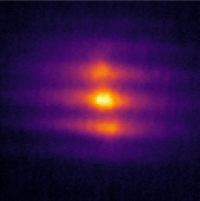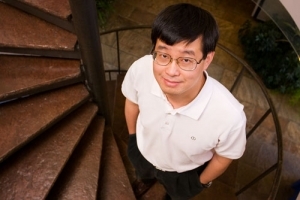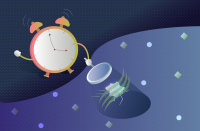Jun Ye
Matsuda
I work on the KRb experiment, where we are studying many-body physics and ultracold chemistry with a quantum gas of polar molecules. I received my Bachelor's degree from Harvard, where I worked on laser cooling of molecules in Professor John Doyle's lab.
von der Wense
I am a Humboldt postdoctoral research fellow working on the XUV frequency comb project towards direct laser spectroscopy of the 229mTh nuclear transition and the development of a nuclear optical clock. I received my PhD from LMU Munich in Germany in 2017 in the field of nuclear physics for the direct detection of the 229mTh nuclear transition.
Staron
I am a graduate student in the strontium research group working on ultra-low phase-noise laser instrumentation for use in precision metrology and the investigation of quantum many-body physics. I completed my bachelor's and master's degrees at Miami University where I studied galactic dynamics with Dr. Stephen Alexander and performed optical lattice experiments with Dr. Samir Bali.
Miller
I am a graduate student on the KRb experiment, studying many-body physics using ultracold molecules. I previously studied physics and applied math at Harvard, where I worked on laser cooling polyatomic molecules and ultrasensitive atomic force microscopy.
Miklos
I work on one of the strontium clock experiments-- on our particular project, we're building a new machine with an optical lattice clock inside a high-finesse cavity. We're aiming to use the long-range interactions unlocked by our cavity as a new platform to study both precision metrology (for example, by achieving a spin-squeezed clock), and many-body physics. I previously studied physics and math at Harvard, working in Misha Lukin's group on a coupled NV/nanomechanical oscillator system.
Liu
I am a postdoctoral research associate working on infrared spectroscopy of buffer gas cooled fullerenes. I earned my PhD in the Ni group at Harvard assembling ultracold molecules with optical tweezers.






 The Physics Frontiers Centers (PFC) program supports university-based centers and institutes where the collective efforts of a larger group of individuals can enable transformational advances in the most promising research areas. The program is designed to foster major breakthroughs at the intellectual frontiers of physics by providing needed resources such as combinations of talents, skills, disciplines, and/or specialized infrastructure, not usually available to individual investigators or small groups, in an environment in which the collective efforts of the larger group can be shown to be seminal to promoting significant progress in the science and the education of students. PFCs also include creative, substantive activities aimed at enhancing education, broadening participation of traditionally underrepresented groups, and outreach to the scientific community and general public.
The Physics Frontiers Centers (PFC) program supports university-based centers and institutes where the collective efforts of a larger group of individuals can enable transformational advances in the most promising research areas. The program is designed to foster major breakthroughs at the intellectual frontiers of physics by providing needed resources such as combinations of talents, skills, disciplines, and/or specialized infrastructure, not usually available to individual investigators or small groups, in an environment in which the collective efforts of the larger group can be shown to be seminal to promoting significant progress in the science and the education of students. PFCs also include creative, substantive activities aimed at enhancing education, broadening participation of traditionally underrepresented groups, and outreach to the scientific community and general public.